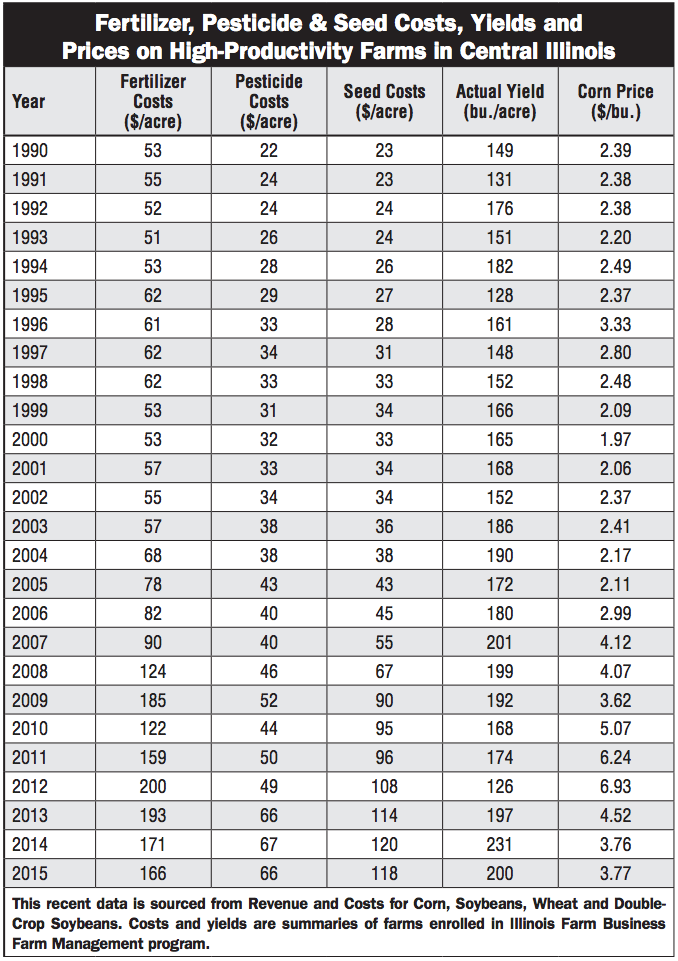Farmer input costs have been among the top three North American farm equipment dealers’ major concerns over the past 5 years, including number one in 2015, according to the results of Ag Equipment Intelligence’s annual Dealer Business Outlook & Trends survey — and for good reason.
The more farmers spend on inputs, like fertilizer, seed, pesticides, etc., the less they tend to invest in equipment.
According to a July 12, 2016 report from the University of Illinois’ Dept. of Agricultural and Consumer Economics at Urbana-Champaign, growth rates of fertilizer, pesticide and seed costs have been higher in years following 2006 than they were between 1990 and 2006.
In the report, “Growth Rates of Fertilizer, Pesticide and Seed Costs Over Time,” university researchers Gary Schnitkey and Sarah Sellars report, “In 2015, the sum of fertilizer, pesticide and seed costs were 48% of crop revenue, much higher than the 36% average from 1990 to 2006.”

As inputs rise, surveys have shown that farmers will tend to first cut back on machinery spends to improve bottom line profits.
No-Till Farmer’s 8th Annual No-Till Operational Benchmark Survey conducted earlier this year showed that land rent payments represent the largest single outlay in a farmer’s cost of production (avg. $71,308). It is followed by fertilizer (avg. $68,938), loan/interest payments (avg. $60,550), seed treatments (avg. $54,771), equipment (avg. $34,141) and pesticides (avg. $32,628).
In that same survey, no-till farmers were asked where they planned to cut back on expenses in 2016, and 64% said they planned to spend less on equipment, which was easily the top cutback on their list.
Costs were calculated in three ways in the study: 1. costs per acre; 2. costs per bushel; 3. costs as a percent of crop revenue. Regardless of how they were calculated, the research shows that fertilizer, pesticide and seed costs have grown on a per acre, per bushel and a percent of crop revenue basis.
According to the researchers, this high rate occurred because per acre costs did not decrease while corn prices did decrease. “At those high levels, it will be difficult for revenue to exceed total costs. As long as corn prices are averaging less than $4 per bushel, high percentages should be expected without substantial cuts in costs. Even with aggressive input usage cuts, it will be difficult for cashflow losses to be reduced without input price decreases.”
In an interview prior to the Top Producer Conference in June, Michael Boehlje, Purdue University economics professor, said, “It’s not all about grain prices. To be frank, it’s more about what is going to happen to input costs that is important.”
— Ag Equipment Intelligence, July 2016









